This month we will be concluding our weekend at the Weymouth International Maritime Modelling Festival, pay a visit to the Floatplane and Model Boat Show at Child Beale Wildlife Park near Reading, and do some more work on the build of a Springer Tug.
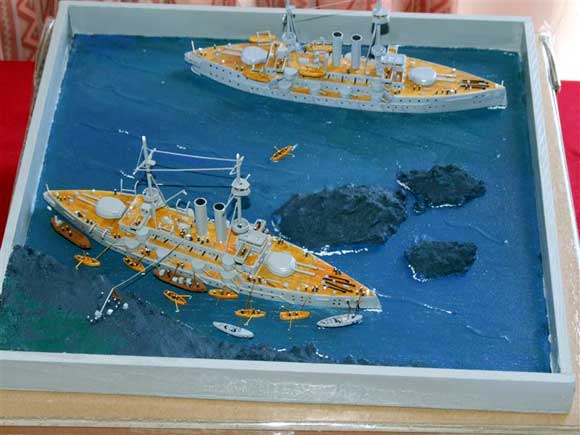
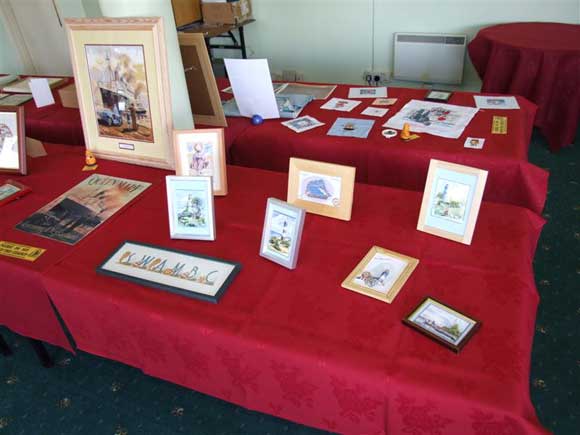
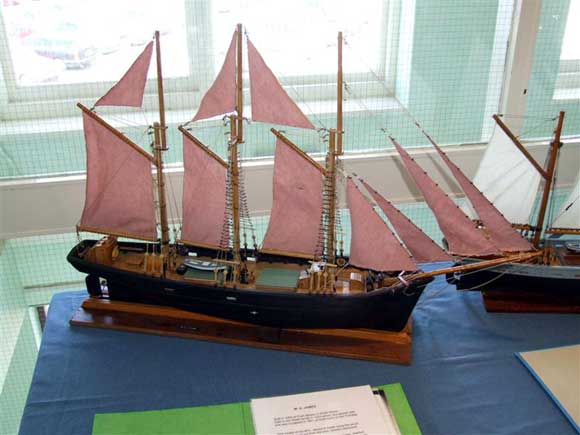
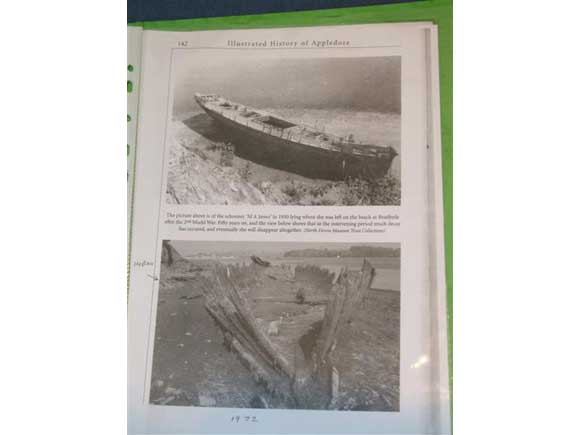
The Weymouth International Maritime Modelling Festival 2007
The displays within the Pavilion are spread over three floors. The very top floor is where the dioramas are on display, and the theme this year was Disaster at Sea. Phillip Warrens entry was The Loss of H.M.S. Montague, Photo 1. This depicts the loss of H.M.S. Montague in 1906 after the pre-Dreadnought ran aground off Lundy Island in thick fog. H.M.S. Duncan, a sister ship, is seen here standing by while the Montague was lightened in an attempt to float her off which was unsuccessful and the ship was broken up. It would be appropriate to mention at this time that the ladies also have their own exhibition space on this floor, showing cross stitch and other images on a maritime theme, Photo 2.
On the next floor down, Phillip Warren had his well known Matchstick Fleet on display. Opposite Phillip was a display of old sailing craft and Richard Bowden had built a range of models all of which were meticulously researched. A typical example was the M.A. James, Photo 3. This exhibit was accompanied by a book of information that Richard had compiled. To give a brief summary, the full size vessel was built in 1910, sold on in 1929 and scrapped in 1951. The model was built from wood taken from plank number six from the keel, forward on the starboard side. The plank was dug out from mud, taken home, washed and allowed to dry before cutting into planks from which the hull, mast and booms were built. Photo 4 is of a page of the book and shows the wreck as it was in 1950 at the top and in 2000 at the bottom. Richard has applied this depth of research and more, to the other models he had on display.
Enjoy more Model Boats Magazine reading in the monthly magazine.
Click here to subscribe & save.
Making our way outside, we stopped to have a look at this model of a sailing trawler that used to be based at Lowestoft, in Suffolk, Photo 5. The sailing trawler Albatross was built in 1877 at Teignmouth and operated out of Lowestoft until it was sunk in 1897 after a collision with a Norwegian Barge. This model, built by Geoff Yarham of Teignmouth, was made from recycled materials and is normally sailed at Crealy Park, Exeter.
Once outside the Pavilion, we made our way to the end of the pier where the OMRA members were getting ready their offshore racing boats, Photo 6. They soon got underway with some pretty close racing taking place, Photo 7. The rescue boat seen in Photo 6 came into use several times during the day! (see OMRA report in November 2007 MB – Editor)
Our modellers passes allowed us free travel on the minibus that travelled between the Pavilion to Radipole Lake (and also to the campsite if required). So we took the easy way out and had a ride to the lake. Radipole Lake is used for fast electric models, yachts, thames barges, tugs and free sailing. On the Sunday, the Portsmouth Model Boat Display team put on their show with lots of bangs and flashes! Models are put on display around the lake and this is a popular venue for many of the clubs. Photo 8 is of HMS Avon Vale, a Type 2 Hunt Class destroyer, launched in 1941 and Photo 9 shows some of the detail.
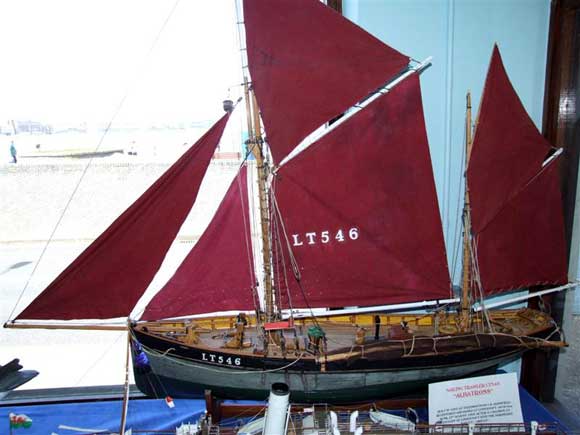
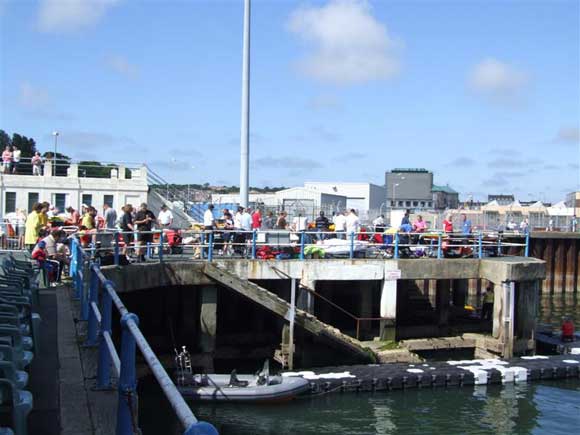
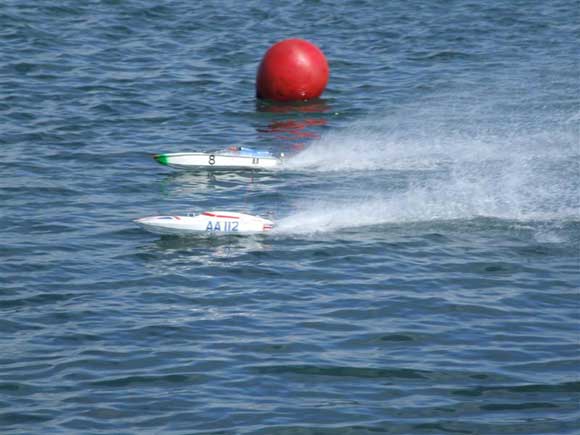
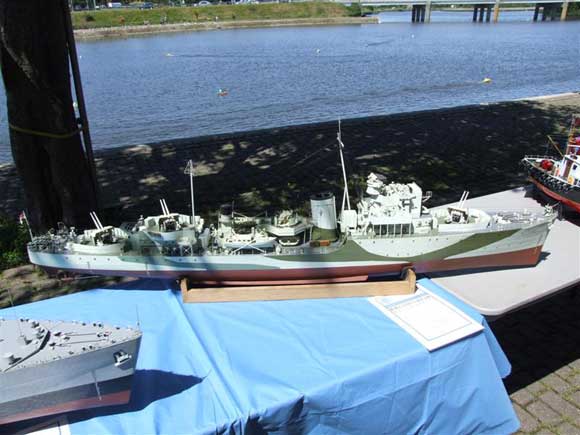
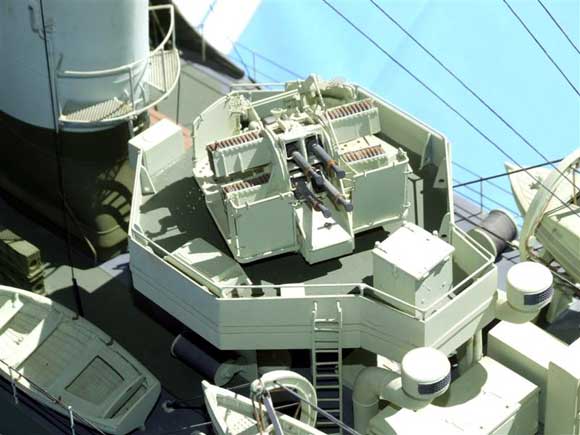
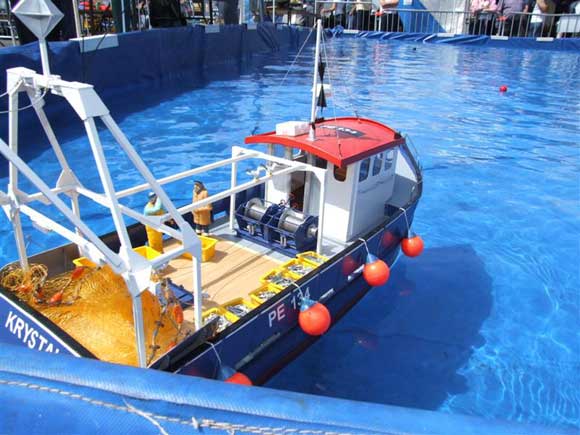
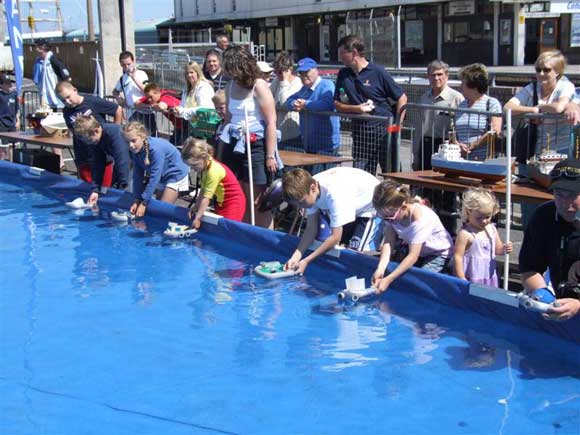
After spending some time at Radipole Lake, chatting to many old acquaintances, we made our way back to the Pavilion to catch up with the outdoor activities taking place there. Immediately in front of the Pavilion was the outdoor pool which is used for free sailing, demonstrations and competitions. Photo 10 is of Richard Webbs Krystal D preparing to get underway. This model is built with his technique of using plastic card sheet for the hull as well as the superstructure and most of the fittings. The photo also gives some idea of the width of the pool. The pool is also used for probably the most important event of the weekend, the childrens paddleboat competition. The children build these in a workshop adjacent to the pool, assisted by staff from Weymouth and Portland Borough Council. Photo 11 shows one of the heats about to get underway. Jackie Stevens is manning the finish line, Photo 12. At the end of the heats and after the final, the prize giving gets underway. Photo 13 shows the Mayor awarding the prizes to the youngsters, with Barrie Stevens complete with hat acting as compere. Another event taking place was the MMI Solar Boat Challenge and after this event the participants had a fun sail on the pool, Photo 14.
Weymouth harbour is also home for full size vessels. Here in Photo 15, is the Condor Express moving astern to leave harbour. There were also these two ex. Loyal Class tenders now used in civilian roles, Photo 16.
Our final picture from the Weymouth International Maritime Modelling Festival is of another traditional vessel, this time a Venetian Gondola, Photo 17. Built by Michael Sheppard, the gondolier propels the model in a life like fashion. As you can see, the finished paintwork is superb.
Well, thats all from Weymouth. My thanks to all who contributed to make this a first class advertisement for model boating hobby. We look forward to more next year.
The Floatplane and Model Boat Show
I cant recall having visited this show before. The normal Child Beale Model Boat Show takes place in the Spring and Autumn with the full size Thames Boat Show in the summer. This event took place early in August and it wasnt well supported by the trade with only two in attendance. Club support was also poor on the maritime side, the bigger display being from the Mid-Thames Model Boat Club, who use this facility as their home water.
Their stand had different models to those I had seen in the summer. Edward Roberts was exhibiting his version of Metcalf Mouldings Lady Laura, Photo 18. The model took five months to build, uses Futaba radio and is propelled by two 545 motors. This fine model Abingdon, Photo 19, is based on the Basset-Lowke Streamlina. Built by Michael Penton, the model originally had a Bassett Lowke Eclipse steam engine fitted, but it is now using electric power, a 1962 Orbit 805 with belt drive. The model was built from yellow pine which was originally the back of an old wardrobe. A piece of Indian Laurel floor block is used for the Samson post. Hitec radio is used with a MFA electronic speed controller.
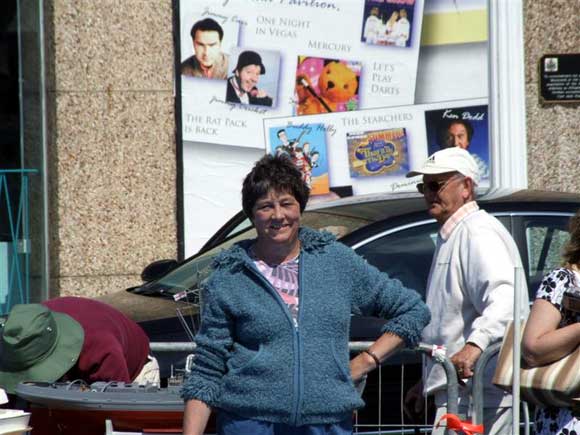
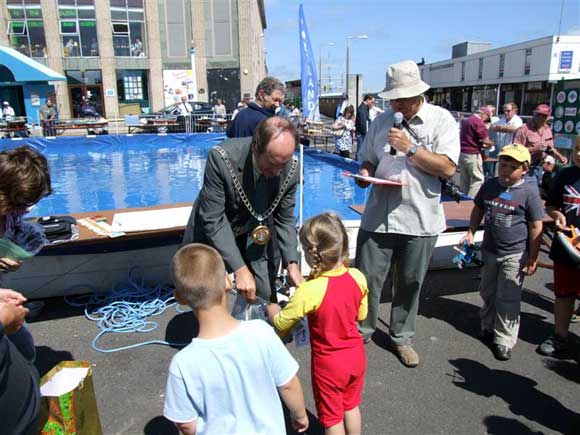
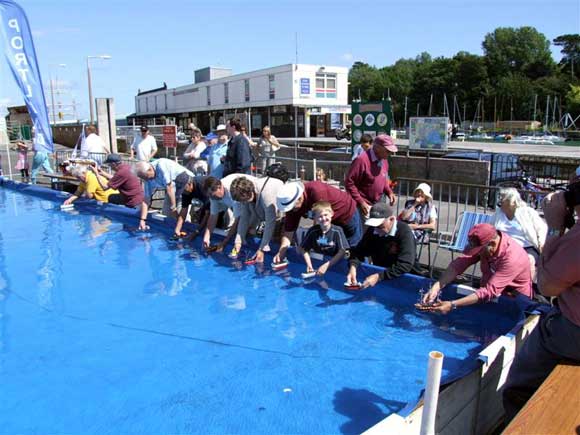
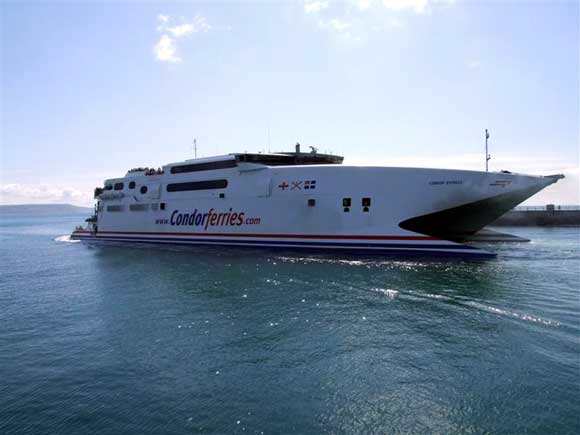
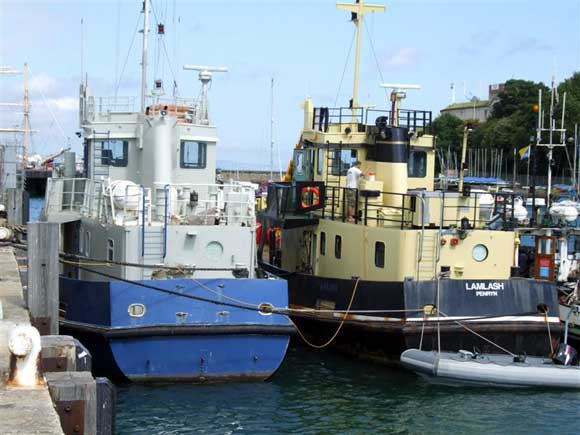
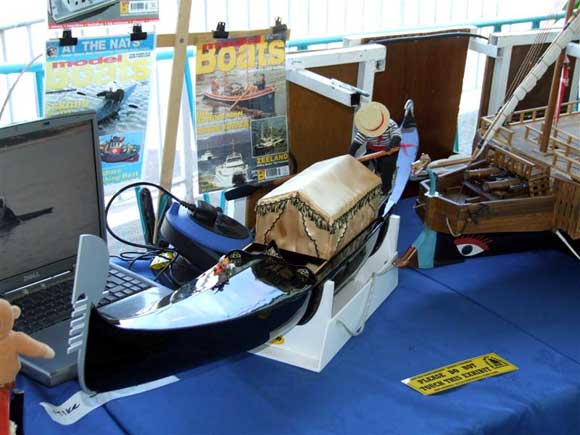
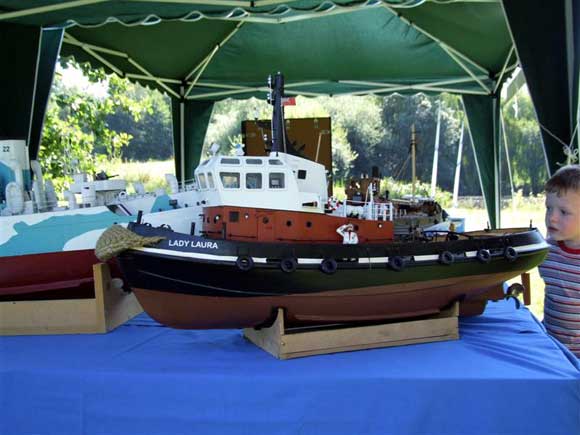
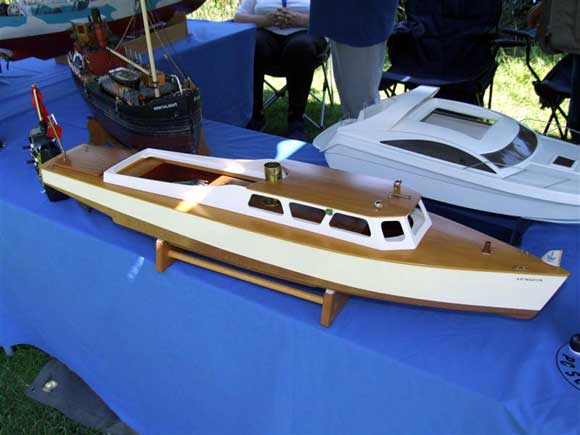
One person visiting as an individual, not as a club member, was John Scorah with two fine models, Photos 20 and 21. The Sammy De took three years to build and is a one fifth scale model of a Laurent Giles design. The model is built from mahogany planks and is detailed inside. The radio is fitted into the lockers and the sail is made from a shower curtain. The other model, Gemma, has ply mahogany sides and planked mahogany decks. Again, the radio is concealed in the lockers and a shower curtain is used for sails.
Near to John was Alan Mayhew, who had joined the Northampton club only three months before. He had an Aerokits Crash Tender with him that had been given to him and was in the process of fitting it out, Photo 22. A MFA Como drive motor was fitted with Futaba radio and an Electronize ESC. Finally, as it was floatplane and model boat show, here is a picture of one of the planes that were being flown throughout the day, Photo 23.
It was disappointing not to see the show better supported. With free entry (it takes place in the grounds outside the park) for individuals and clubs it was surprising not to see more modellers in attendance.
Springer Tugs Part Three
Last month I got to the stage where I was about to fit the rudder tube. After drilling the hole in the hull to suit, I realised that there would be insufficient space between the tiller arm and the stern of the model for the tiller arm to have sufficient space to have adequate movement. I overcame this problem by removing some of the material from the stern as can be seen in Photo 24. This wasnt a major problem as the stern was built from 1in (25mm) pine.
The next task was to tackle the rudders. I had purchased rudder and rudder tube assemblies from SHG, but I wanted a different profile for the rudders. This was accomplished by cutting plastic card to the appropriate profile, Photo 25, abrading the rudder to provide a suitable key, and gluing the plastic card to the rudder with epoxy adhesive (Araldite). Small pieces of plastic card were cut to shape to fill in the gaps between the edge of the original rudder and the edge of the new shape, Photo 26. When the glue was dry, the top piece of plastic card was glued in place and the rudders trimmed to the new profile.
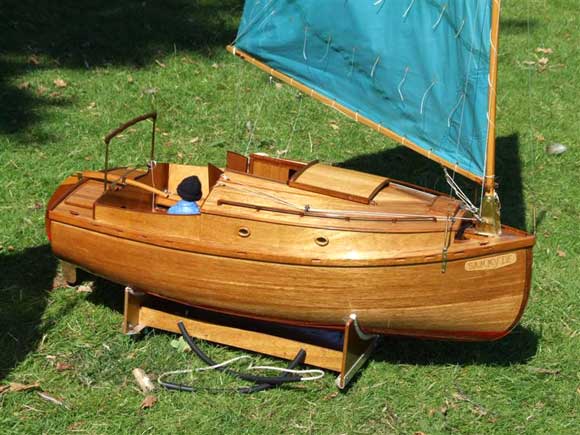
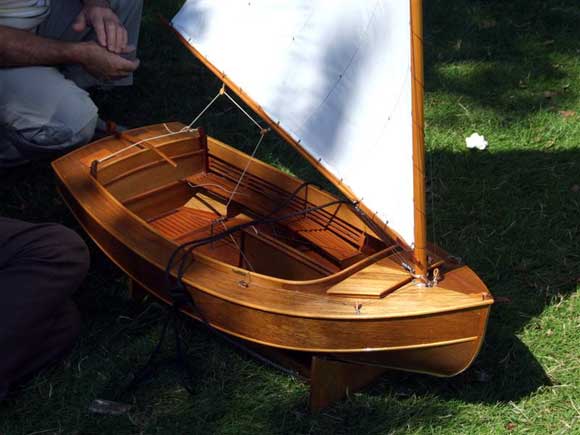
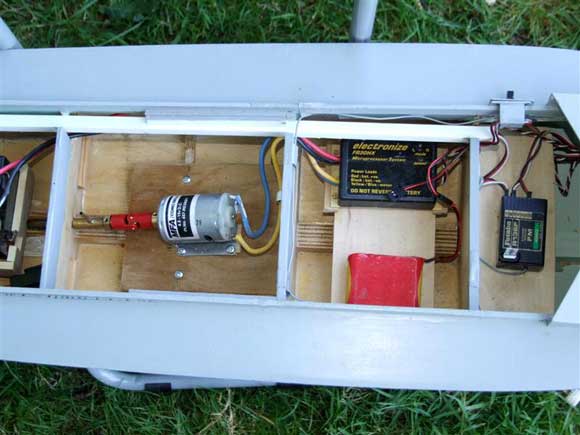
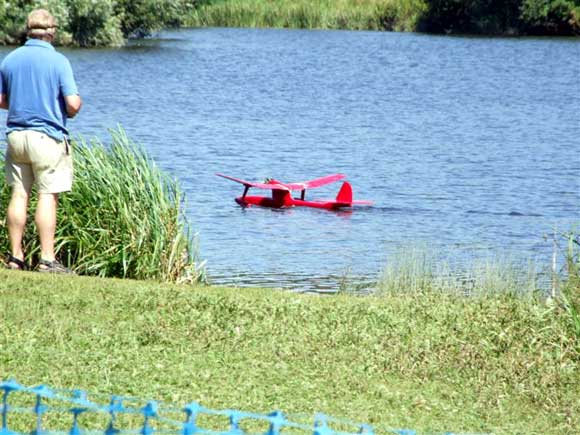
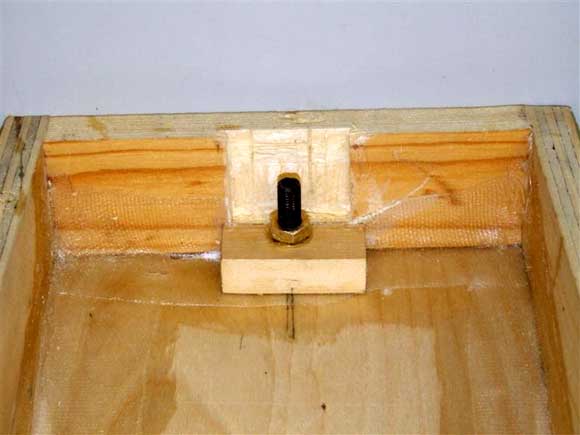
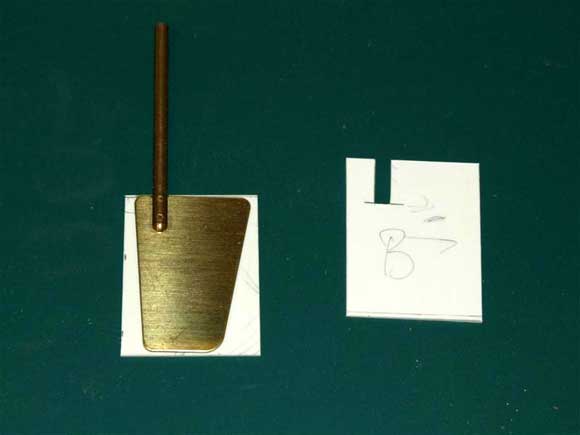
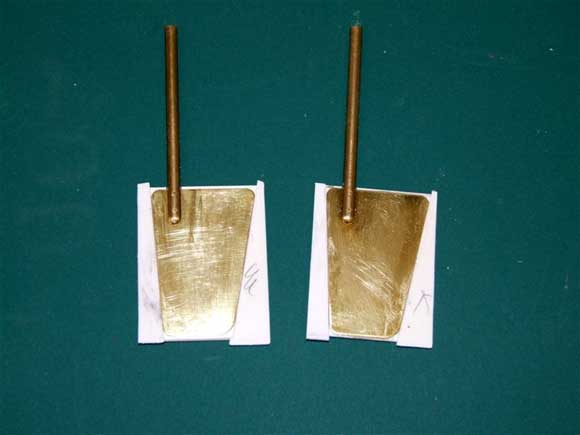
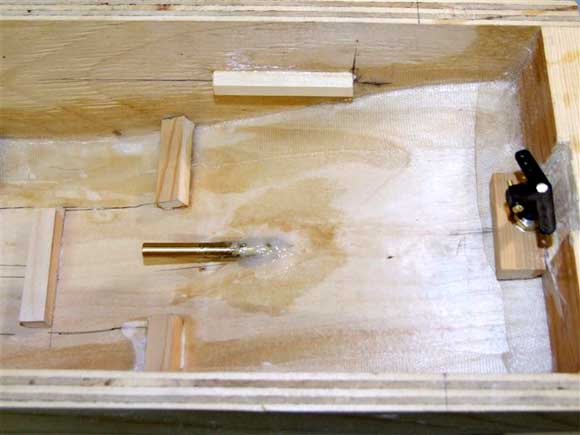
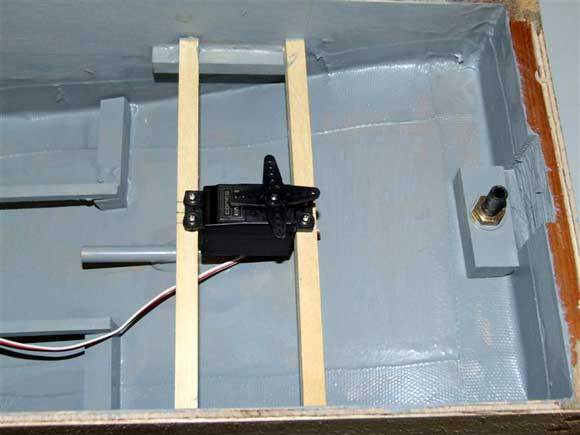
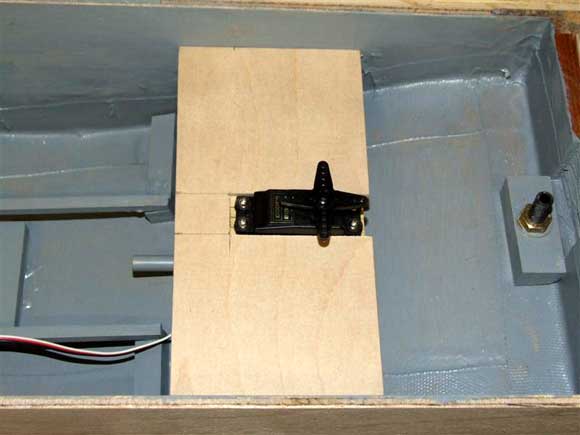
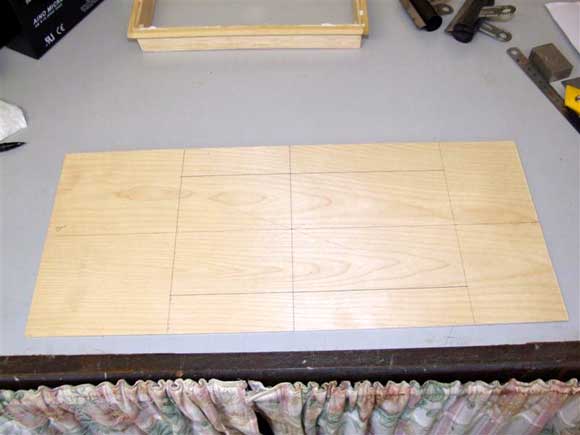
Back to the hull and two 6v 4amp batteries were placed in position, on edge, alongside the motor mounts. Small wooden blocks were glued in place to prevent any forward or aft movement of the batteries, Photo 27. The tiller arm can also be seen as well as one of the supports for the rudder servo mount. Two wooden servo mounts were cut to suit the width of the model and glued in place. With the centre marked on the two wooden servo mounts, the servo was fitted, Photo 28. To finish off this part of the model, a plywood plate was cut to fit around the rudder servo and glued into place on the servo mounting beams, Photo 29. This was to provide a mounting surface for the radio receiver and electronic speed controller. The next job was to consider fitting a suitable deck and superstructure.
I had a good look at the various configurations featured on the web, but I still had in the back of my mind the superstructure I had built for my earlier model of a pusher tug. This was based on Dave Metcalfs design for a Motaflote tug which was used in Poole Harbour. I roughed out an idea of the proportions this would need to be, and after cutting out a suitable piece of 1/16in ply for the deck transferred these dimensions to the deck, Photo 30. This seemed to be about right with the exception of access to the tiller/servo linkage. I decided to press on, persuading myself that I could always cut out this access hatch later if necessary. This I actually had to do on my Tsekoa to gain access to the rudder linkages some three years after the original build.
Well, I must leave it at this point. More next time, as well as a visit to the Surface Warship Association (SWA) day at Belhus Park which is the regular home of the Grays Thurrock Model Boat Club.
Until then, happy modelling and if you wish to get in touch please do so via the editor or email [email protected].




